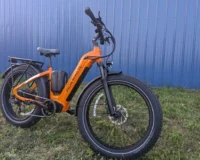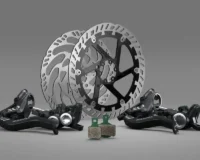The roar of the engine is replaced by a near-silent hum, but the thrill is just as potent. Sur-Ron electric bikes have stormed the scene, blending the lightweight agility of a mountain bike with the exhilarating power of a dirt bike. They offer a unique way to explore off-road trails and, in some cases, city streets. But as you get ready to twist the throttle, a critical question arises: Do I need a license for a Sur-Ron?
The answer isn’t a simple yes or no. It’s a complex issue that depends heavily on where you live, how you ride, and which model you own. Navigating the maze of local and national regulations can feel overwhelming. This guide will provide the clarity you need. We will explore the legal status of Sur-Ron bikes, break down the factors that determine licensing requirements, and offer practical tips to ensure you ride legally and safely.
What Exactly is a Sur-Ron?
Before diving into the legalities, let’s understand what makes a Sur-Ron unique. Launched in 2014, Sur-Ron bikes quickly carved out a new niche in the electric vehicle market. They aren’t quite electric bicycles, and they aren’t full-fledged motorcycles. They exist in a gray area that challenges traditional vehicle classifications.
The most popular model, the Sur-Ron Light Bee X, is a prime example. It’s lightweight, powerful, and built for aggressive off-road performance. With a top speed that can exceed 45 mph, it delivers a motocross-like experience without the noise, emissions, or heavy maintenance of a gas-powered bike. This potent combination of features is precisely what places it under the microscope of transportation authorities worldwide. Is it a toy, an off-road vehicle, or a street-legal moped? This classification is the key to understanding the Sur-Ron license requirements.
Legal Requirements for Riding a Sur-Ron
The central question—”Do I need a license for a Sur-Ron?”—depends almost entirely on how your local jurisdiction classifies the vehicle. Laws vary dramatically between countries, states, and even cities. Generally, vehicles are categorized based on factors like top speed, motor power, and the presence of functional pedals.
Let’s break down the Sur-Ron legal status in several key regions.
United States: A State-by-State Puzzle
In the United States, there is no single federal law that governs Sur-Rons and similar electric dirt bikes. Instead, vehicle classification is left to individual states, creating a patchwork of different rules.
- Classification as a Moped or Motorcycle: Many states will classify a Sur-Ron as a moped or a motorcycle due to its high top speed and powerful motor. For instance, in states like California and New York, any two-wheeled vehicle capable of exceeding 20 mph or 30 mph, respectively, typically requires registration, a license plate, and a motorcycle endorsement on your driver’s license. If your Sur-Ron falls into this category, you will need to treat it just like a small motorcycle.
Off-Highway Vehicle (OHV):
In its stock form, the Sur-Ron is sold as an off-road-only vehicle. In this context, many states classify it as an Off-Highway Vehicle (OHV). This means you can ride it legally on private property and designated OHV trails without a driver’s license. However, you will likely need to obtain an OHV permit or sticker from your state’s Department of Motor Vehicles (DMV) or parks department. Riding on public roads, bike lanes, or sidewalks is strictly prohibited.
- The “E-Bike” Confusion: The term “e-bike” often causes confusion. Federal law defines a low-speed electric bicycle as having a motor under 750 watts and a top assisted speed of 20 mph. The Sur-Ron far exceeds these limits. Therefore, it does not qualify as a Class 1, 2, or 3 e-bike in the U.S. and cannot be legally ridden in bike lanes or on multi-use paths where only e-bikes are permitted.
Because of this complexity, you must check your state’s specific electric dirt bike laws. A quick visit to your local DMV website is the best first step.
United Kingdom: Navigating L-Category Vehicles
The UK and Europe have a more standardized system for classifying two-wheeled vehicles. A stock Sur-Ron Light Bee X does not meet the requirements for an “electrically assisted pedal cycle” (EAPC) due to its power and speed. Instead, it falls into one of the L-category vehicle classifications.
To be ridden on public roads, a Sur-Ron must be homologated (type-approved) and registered as a moped (L1e-B category). These road-legal versions are typically sold with a restricted top speed of 28 mph (45 km/h). To ride one, you will need:
- To be at least 16 years old.
- A provisional driver’s license.
- A Compulsory Basic Training (CBT) certificate.
- To have the bike registered, taxed (usually free for electric vehicles), and insured.
- To display a valid license plate.
If your Sur-Ron is not a road-legal L1e-B version, it is considered an off-road vehicle. It can only be used on private land with the landowner’s permission. Riding it in public parks, on roads, or on pavements is illegal.
Australia: A Mix of State and Territory Rules
Similar to the U.S., Australia’s regulations vary by state and territory. In general, a standard Sur-Ron is too powerful to be classified as a legal electric bicycle. To be ridden on public roads, it must be registered as a moped or motorcycle.
For example, in New South Wales (NSW), a vehicle like the Sur-Ron would likely be classified as a motorcycle, requiring full registration and a rider with a motorcycle license. Some states may offer conditional registration that allows limited road use, but these schemes are often restrictive. For most owners, the Sur-Ron remains an off-road machine, limited to private property and designated riding parks.
Factors Influencing the Need for a License
As we’ve seen, several key factors determine the Sur-Ron license requirements. Understanding these will help you figure out what rules apply to you.
- Top Speed: This is often the most important factor. Most jurisdictions have specific speed thresholds. A vehicle capable of exceeding 20 mph (32 km/h) or 30 mph (48 km/h) is almost never considered a simple bicycle. The Sur-Ron’s ability to reach 45 mph or more firmly places it in a higher regulatory category.
- Motor Power Output: Motor wattage is another critical metric. E-bike laws typically cap continuous power output at 750W (in the U.S.) or 250W (in the EU/UK). The Sur-Ron’s motor is significantly more powerful, with a peak output of over 6,000 watts, disqualifying it from e-bike classifications.
- Presence of Functional Pedals: The absence of functional pedals is a major distinction. While some Sur-Ron owners add pedal kits, the bike is not designed to be propelled by human power. Vehicles without pedals are almost universally classified as motor vehicles, such as mopeds or motorcycles, not bicycles.
- Street-Legal Modifications: A stock Sur-Ron is not ready for the road. To make it street-legal (where possible), you must add essential equipment. This includes:
- Headlight, tail light, and brake light.
- Turn signals.
- Mirrors.
- A horn.
- A license plate mount.
Even with these additions, you must still go through the official process of getting the bike inspected and registered with your local motor vehicle agency. Simply adding lights is not enough to make it legal.
Safety and Insurance: Beyond the Law
Regardless of whether you need a license, safety and insurance are non-negotiable. The Sur-Ron is a powerful machine that demands respect and responsibility.
Essential Safety Gear
The thrill of riding can quickly turn tragic without the right protection. Because a Sur-Ron has the speed and performance of a dirt bike, you should wear full motocross gear every time you ride.
- Helmet: A high-quality, full-face DOT or ECE-certified helmet is the most important piece of safety equipment. Do not use a standard bicycle helmet.
- Goggles: Protect your eyes from dust, debris, and insects.
- Gloves: Improve your grip and protect your hands in a fall.
- Boots: Sturdy, over-the-ankle boots (preferably motocross boots) protect against foot and ankle injuries.
- Body Armor: A chest protector, back protector, and knee and elbow pads provide crucial protection during off-road riding.
The Importance of Insurance
If you plan to ride your Sur-Ron on public roads, liability insurance is legally required in most places. This covers damages or injuries you may cause to others in an accident. Without it, you could face severe legal and financial consequences.
Even for off-road use, insurance is a smart investment. Theft is a major concern with these desirable bikes, and a good policy can cover you. Furthermore, some private riding parks and OHV areas require proof of liability insurance before they allow you to ride on their property. Check with specialty motorcycle insurance providers, as many traditional companies are still learning how to classify and cover these unique vehicles.
Tips for Staying Compliant and Riding Responsibly
Navigating the legal landscape of Sur-Ron ownership can be tricky, but a few simple steps can keep you on the right side of the law and ensure a positive experience for everyone.
- Do Your Local Research: This is the most important step. Before you buy or ride, visit the website of your state or provincial DMV. Search for terms like “moped,” “motor-driven cycle,” and “electric motorcycle” to find the exact classifications and rules. If you’re still unsure, call them directly.
- Join Online Communities: Connect with other Sur-Ron owners in your area through forums and social media groups. They are often a valuable source of practical information about local electric dirt bike laws and the processes for getting a bike registered.
- Never Ride on Public Roads Illegally: The temptation to zip around town on your off-road Sur-Ron can be strong, but the risks are not worth it. A single police stop could result in a hefty fine, impoundment of your bike, and points on your driver’s license.
- Be a Good Ambassador: When riding off-road, be respectful of the environment and other trail users. Stay on designated trails, yield to hikers and equestrians, and keep noise to a minimum. A positive reputation for electric dirt bike riders will help ensure we have places to ride for years to come.
- Carry Your Documentation: If you have registered your bike and have a license, always carry your license, registration, and proof of insurance with you when you ride. If you are riding on OHV land, keep your OHV permit visible on your bike.
Conclusion: Ride Smart, Ride Legal
So, do you need a license for a Sur-Ron? The answer is almost certainly yes if you intend to ride on any public road. Due to its speed and power, the Sur-Ron is classified as a moped or motorcycle in most jurisdictions, requiring registration, insurance, and the appropriate license or endorsement.
For off-road use on private land or in designated OHV areas, a driver’s license is not typically required, but you will likely need an OHV permit. The key takeaway is that a Sur-Ron is not a simple e-bike, and it cannot be treated as one.
By doing your research, investing in proper safety gear, and riding responsibly, you can unlock the incredible potential of these amazing machines. Understanding and respecting the Sur-Ron legal status in your area is the first step to countless hours of thrilling and compliant riding.






